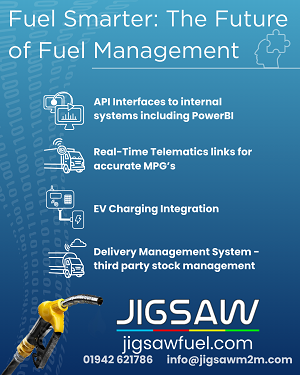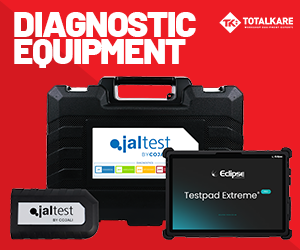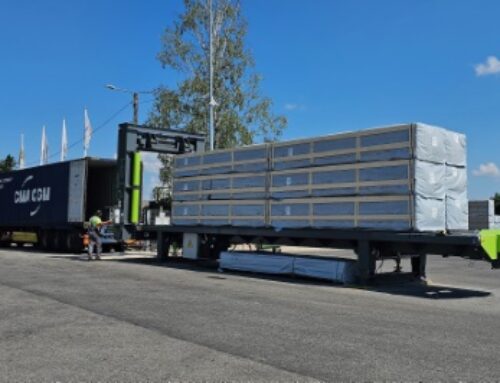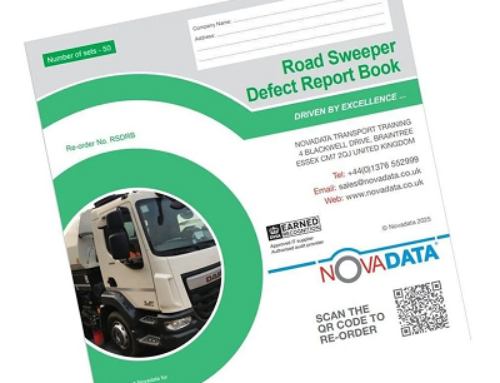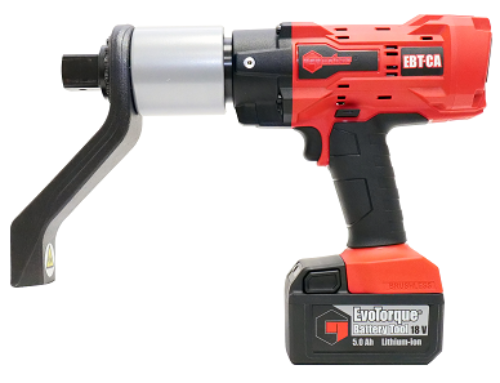CTS: 5 key factors when choosing AdBlue pumps
 Storage and dispensing specialist Centre Tank Services has outlined a range of considerations it suggests fleets should take into account when selecting pumping equipment for AdBlue.
Storage and dispensing specialist Centre Tank Services has outlined a range of considerations it suggests fleets should take into account when selecting pumping equipment for AdBlue.
The company has been supplying AdBlue equipment since it first entered the market in 2005, and is an official distributor of the Piusi AdBlue pump portfolio.
“Unlike a loaf of bread or a new t-shirt, an AdBlue pump isn’t something you’d usually find yourself buying on a regular basis,” said the company.
“Therefore, selecting the one you need can seem like a minefield, especially when you consider the vast amount of AdBlue pump product lines available.
“Whilst most options can be used for several applications, each AdBlue pump tends to have different features that make it more or less suitable for a particular use.
“There are five key questions to ask yourself when you’re in need of an AdBlue transfer pump… and it’s the answers to these five questions that help determine a model, or a shortlist of models, that are most suitable.”
1. How is the AdBlue stored?
AdBlue is usually stored in one of three ways – says CTS – drums, intermediate bulk containers (IBCs) or tanks – and the means of storage is an important indication as to what pump may be required, as there are specific kits designed for mounting onto the different containers.
“Usually AdBlue is stored in drums when usage of the fluid is low, perhaps only one or two vehicles require it and purchasing bulk quantities isn’t worthwhile,” the firm said.
 “AdBlue drum pumps usually come with a down tube and drum connector to allow easy connection and dispensing from the barrel…
“AdBlue drum pumps usually come with a down tube and drum connector to allow easy connection and dispensing from the barrel…
“As usage grows, many companies move to storing their AdBlue in 1,000l IBCs. AdBlue IBC pumps are usually very specific in design as they require a special SEC connector and are often mounted to a plate that hangs off the side of the cage.”
Onsite AdBlue storage tanks are growing in popularity, says CTS.
“As more and more vehicles in a fleet are using AdBlue, it starts to make sense for the fluid to be bulk purchased just like the diesel.
“AdBlue tank pumps are usually compact models, integrated into the tank at manufacturing stage that needs to be replaced with one of a similar size and orientation.”
2. How will the AdBlue pump be powered?
The power supply available at the point that the AdBlue transfer takes place is another important factor to consider, says CTS.
“For static applications where vehicles pull up to refill at the AdBlue tank installed in a fixed location, electric AdBlue pumps may likely be your preference as they simply run off the mains, which is usually either 230v or 110v.
“If you’re refilling out ‘in the field’, for example in agricultural and construction applications, mains supply may be inaccessible, leaving battery powered or manual pumps as your options.
“For speed, 24v or 12v AdBlue pumps complete with clips and cable for vehicle battery connection are preferred. Which voltage you chose here depends upon the battery voltage of your vehicle the pump is refilling.
“If the volume of AdBlue you’re transferring does not necessarily warrant the cost of a quicker, electric or battery powered pump, an AdBlue hand pump may be a more appealing option price-wise.”
3. Is a dispensing kit or pump alone required?
The company explains that AdBlue transfer pumps can be supplied alone or as part of a dispensing kit complete with nozzle, hose etc.
“Alone, a pump is pretty much of no use, but if you’re replacing the pump in an existing set up and the other parts are all still in working order you may not want a kit,” said CTS.
“If a complete dispensing kit is required, you then need to consider which other components you need. Do you want a manual or automatic shut off nozzle to prevent overfilling a vehicle? Do you want a meter to count the amount of AdBlue dispensed each time? What length delivery hose is needed in order to reach the vehicles’ fill point?”
4. What type of flow rate is preferred?
The larger the volume of AdBlue you want to transfer in one go, the quicker the pump you need, says CTS, and therefore the higher the flow rate you want to consider.
“Most electric AdBlue pumps fall around the 35lpm mark, which is a good speed given that vehicle’s AdBlue tanks are not as large as their diesel tanks. If you’re filling a car rather than a lorry or agricultural machinery however, lower flow rate pumps are more suitable.”
 5. How will the AdBlue transfer pump be used?
5. How will the AdBlue transfer pump be used?
The company advises considering exactly what the AdBlue pump will be required to do and what environment it needs to work within, as these factors may make certain pumps even more ideal.
“For example, if you’re using it in a particularly heavy duty, off road environment like a construction site, you may want to consider an AdBlue pump that comes in a heavy-duty box to protect it from dirt and damage,” the company added.
“Thinking about each of these [questions] one by one will help you break down the choices available to you quite quickly. For example, knowing the type of container you are dispensing from will immediately cut out 50 per cent of the pumps in the range. As you progress through the questions you will probably end up with just one or two options to choose between.”
The CTS AdBlue range covers IBC pumps, drum pumps and solutions for bulk tank delivery. As official Piusi agent, the company maintains a large stock holding of the Suzzara Blue range of Piusi AdBlue pumps, said to offer quality and reliability.





